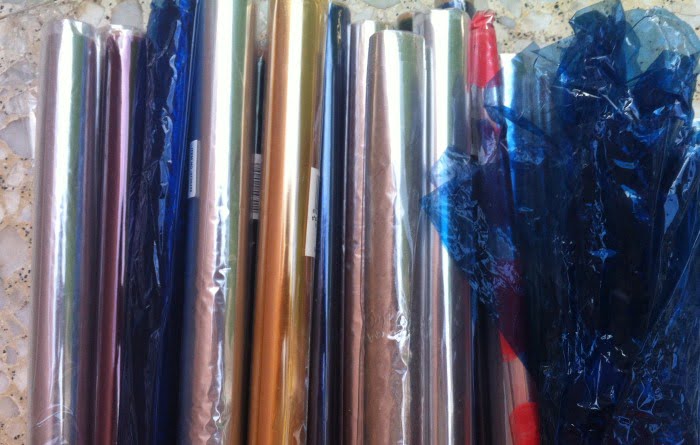Many plastics are derived from fossil fuels; but some can and are being be made from plant material, including industrial hemp. While plant-based plastics may seem like a new idea; they’ve actually been around for many years.

One is type of plastic is based on cellulose; which is a natural polymer. A common example of a cellulose based plastic is cellophane, the crinkly stuff often used to package snacks. Cellophane is considered to be a bioplastic.
An ideal plant for extracting cellulose from that doesn’t involve felling trees and destroying forests is industrial hemp. It grows very quickly with comparatively minimal inputs. Hemp bast fibers are made up of around 70% cellulose, while the woody core (hurd) has 40% cellulose content. A single hectare of industrial hemp can provide around 5 tons of cellulose a year.
Other bioplastic materials made with hemp are composites; consisting of a binder and the fibrous material (hemp fiber).
Ford – A Hemp Plastics Pioneer
The Ford motor company was tinkering with using hemp in composite plastics more than 75 years ago.
An excerpt from The Evening Herald from Klamath Falls, Oregon; August 14, 1941 states:
“One of the plastics developed by Ford chemists is a material composed of 70 per cent cellulose fiber and 30 per cent resin binder. The cellulose fiber consists of 50 per cent southern slash pine fiber, 30 per cent straw, 10 per cent hemp and 10 per cent ramie.”
The following is a video show the “plastic” Ford car in 1941 and how tough the panels were, claimed to be much stronger than steel.
Henry Ford appeared to be on a winner and it’s not clear why the company didn’t follow through; but the war and mounting pressure from powerful anti-hemp forces may have played a role. One can only wonder how much further and faster hemp bioplastics may have evolved if Mr. Ford had pursued his plastic car concept.
The idea is far from dead though – some vehicle manufacturers are re-examining the potential of hemp for use in producing car components such as door panels, boot linings and instrument panels. Renew Sports Cars is taking things further, with a vehicle featuring a body made with industrial hemp.
Outside the auto industry, hemp plastics are appearing in water bottles, phone cases, sunglass frames and even skateboard decks and funerary urns.
Hemp And The 3D Printing Revolution
Hemp plastics are already being used in high-tech applications such as 3D printing after hemp’s compatibility as a filament material (3d printer “ink”) was established.
“The potential of hemp fibre as a reinforcing material for Poly(lactic acid) (PLA) was investigated. Good interaction between hemp fibre and PLA resulted in increases of 100% for Young’s modulus and 30% for tensile strength of composites containing 30 wt% fibre.”
Some hemp filament products are compatible with any 3D printer capable of printing with polylactic acid (PLA), one of the most commonly used filaments. PLA is a biodegradable thermoplastic derived from renewable resources; plant starches extracted from crops such as corn, sugar cane and sugar beet.
This does however raise the issue of using food crops for non-food purposes, unless the crops used or components of them from which the PLA materials are made, were destined to be waste for whatever reason. The introduction of hemp into these materials helps reduce impact in this regard.
In hemp 3D printing filaments, hemp particles are combined with the PLA and results in items with a high degree of visible biofill, making them stand out from other PLA-based products.
Hemp bioplastics advantages
- Biodegradable
- Renewable resource
- Strong
- Thermal stability
- UV stability
- Lightweight
- Versatile
- Ease of manufacturing – can be produced with standard plastic injection and 3D printers.
Addressing The Fossil-Fuel Plastic Problem
Annual production of plastic topped 311 million tonnes in 2014. This and the many plastic items created before that year will be with us for a long time to come.
Most fossil fuel based plastics don’t biodegrade as such, but just break down into smaller pieces.
Plastic trash is becoming increasingly prevalent in our oceans, where it’s ingested by birds and marine life. This can lead to digestive system blockages resulting in starvation, or poisoning through the toxins in the plastic.
It’s estimated around 150 million tonnes of plastic waste is in the ocean today – and this figure could reach 850-950 million metric tonnes by 2050.
A remote South Pacific island has highest density of plastic rubbish in the world – and yet is not near any shipping lanes and has a permanent population of zero. The garbage is drifting in from elsewhere.
While prevention is better than cure, i.e. effective waste management, wider use of hemp plastics could help address some of these issues.
There’s also the energy and carbon aspect to consider.
In addition to the carbon savings associated with growing hemp in comparison to extracting fossil fuels, producing hemp plastic also apparently requires up to 45% less energy than fossil fuel-based based plastic products.
The cost of hemp bioplastics is still more than fossil-fuel based counterparts for now. As more industrial hemp is grown, its benefits more widely embraced, climate change factors start playing a greater role in material choices and associated technologies evolve; the economics of industrial hemp based plastic will only get better – and that will be good for the planet.

